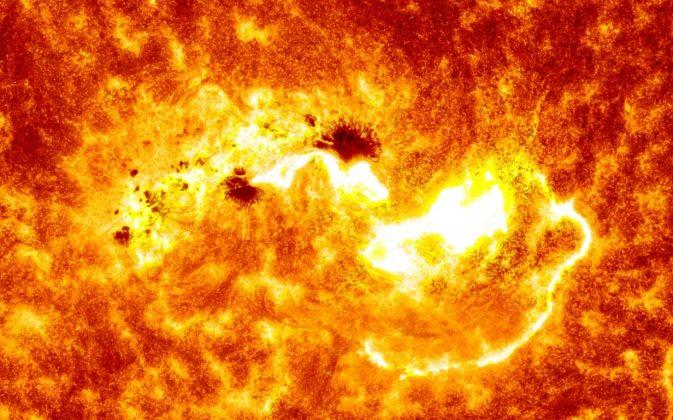A solar flare from the sun that was headed to Earth hit today around 3 p.m. EST, arriving weaker than expected.
The intial weak impact could strengthen, though, as geomagnetic storms could develop as Earth passes through the coronal mass ejection (CME)’s wake, according to Space Weather.
NASA forecasters are predicting a strong geomagnetic storm Thursday and Friday, with possible widespread voltage control problems.
The X1.2-class solar flare on January 7 was associated with the CME, a solar phenomenon that can send billions of tons of particles into space, which sometimes reach Earth one to three days later.
“These particles cannot travel through the atmosphere to harm humans on Earth, but they can affect electronic systems in satellites and on the ground,” according to NASA. They are particularly harmful to small, modern electronics.

Sunspots. The CME came from 1943, NASA says.
X-class flares are the most intense flares, with X1-class being the lowest in intensity scale. An X2 flare is twice as intense as X1, and so on.
The flare is expected to bring an aurora, a phenomenon that brings lights from the sky, across the United States on Thursday and Friday nights, the National Weather Center said.
“If you don’t mind getting up early and have few to no clouds in your area overnight, you may get a chance to see the Aurora if you live in the Northern lower 48,” it said.

A giant cloud of solar particles from the CME. (ESA/NASA/SOHO)

The solar flare from a different perspective. (NOAA/NWS)






Friends Read Free